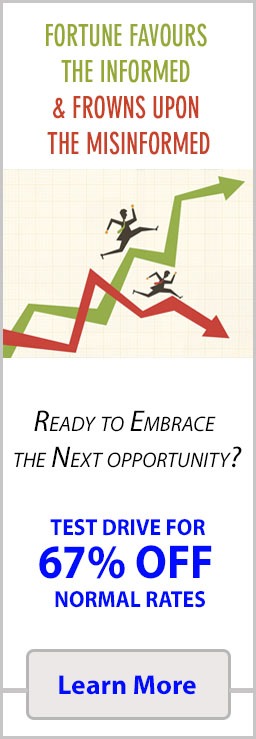
The Great Behavioral Reset: When Fear Met FOMO in Living Rooms Worldwide
Jul 8, 2025
March 2020: The S&P 500 crashes 34% in five weeks as investors flee everything that isn’t cash or government bonds. Six months later, Robinhood adds more new accounts than the previous decade combined, while day traders treat Tesla like a lottery ticket, and Reddit forums become market-moving forces. The pandemic didn’t just reshape the economy—it rewired investor psychology in ways that will echo through markets for decades.
The lockdowns created history’s largest natural experiment in behavioral finance. How did the COVID-19 pandemic reshape investor risk behavior? It revealed that isolation, stimulus money, and market volatility combine to create entirely new categories of investment mistakes while amplifying every existing psychological bias that destroys wealth. The same people who panic-sold in March were buying meme stocks with their stimulus checks by June, displaying risk behaviors that swung from extreme aversion to reckless speculation within months.
What emerged wasn’t just changed investor behavior—it was the complete breakdown of traditional risk frameworks that had governed individual investing for generations. The pandemic revealed that risk tolerance isn’t a stable personality trait but a contextual response to environment, information flow, and social pressure. Understanding these changes is crucial because the psychological patterns established during COVID continue to drive market behavior today.
The data tells a story that defies conventional wisdom about how people respond to crisis. Instead of becoming permanently risk-averse after experiencing market trauma, many investors became more risk-seeking than they’d ever been. The pandemic didn’t just reshape markets—it revealed fundamental truths about human psychology under stress that challenge everything we thought we knew about investor behavior.
The March Panic: When Fear Overrode Everything
The initial COVID crash displayed loss aversion and panic selling in their purest forms. Investors didn’t gradually reduce risk as uncertainty increased—they fled markets entirely, selling everything from blue-chip stocks to government bonds in desperate searches for cash. The VIX spiked to levels unseen since 2008, but the psychological response was different this time.
Previous market crashes had clear financial causes that investors could analyze and understand. COVID represented existential uncertainty about the basic functioning of human society. This unknown-unknown quality triggered psychological responses that went beyond normal market fear into primal survival instincts that made rational risk assessment impossible.
The selling wasn’t discriminating. Investors dumped profitable companies alongside struggling ones, growth stocks alongside value stocks, domestic holdings alongside international ones. The psychological framework shifted from “what investments make sense?” to “how do I survive this crisis?” This created indiscriminate selling that had little relationship to fundamental analysis or strategic positioning.
Professional investors who understood behavioral finance recognized this panic as a massive opportunity. They bought aggressively while retail investors sold frantically, understanding that extreme fear creates systematic mispricing that reverses when psychological pressure subsides. The March lows marked the exact moment when emotional selling reached maximum intensity and rational buying began to prevail.
The Lockdown Laboratory: Isolation Breeds Speculation
The lockdowns created unprecedented conditions for investment behavior: millions of people stuck at home with stimulus money, closed casinos, cancelled sports, and volatile markets accessible through smartphone apps. This combination transformed ordinary consumers into active traders almost overnight, creating new behavioral patterns that defied traditional risk models.
Boredom became a powerful driver of risk-taking. With normal entertainment and social activities eliminated, trading provided excitement, social connection, and the possibility of quick profits. Day trading volume exploded as people treated market speculation like gaming, complete with online communities that gamified investment decisions through social media platforms.
The social isolation also eliminated traditional sources of financial advice and behavioral moderation. Instead of discussing investments with experienced friends or family members, new traders relied on Reddit forums, TikTok videos, and YouTube channels that promoted increasingly aggressive strategies. This created echo chambers where risky behavior was normalized and conservative approaches were ridiculed.
Stimulus payments provided “play money” that felt psychologically different from earned income. People who would never risk their savings on speculative investments felt comfortable gambling with government checks, treating stimulus money as found money that carried no emotional attachment. This mental accounting error enabled risk-taking that would have been psychologically impossible with regular income.
The Meme Stock Revolution: When Social Proof Meets Market Manipulation
GameStop’s January 2021 explosion represented the ultimate expression of COVID-era risk behavior: coordinated speculation driven by social media, fed by stimulus money, and justified through anti-establishment narratives that made financial recklessness feel like social justice. The event revealed how isolation and online communities can amplify herd behavior to dangerous extremes.
The psychological framework wasn’t traditional investment analysis but collective action against perceived enemies. Retail traders convinced themselves they were fighting hedge funds and corrupt financial systems rather than making speculative bets on overvalued stocks. This narrative transformation made extreme risk-taking feel morally justified rather than financially dangerous.
Social proof mechanisms operated at unprecedented scale and speed. When thousands of people shared screenshots of massive gains from diamond hands strategies, the psychological pressure to participate became overwhelming. FOMO replaced fundamental analysis as the primary decision-making framework, creating momentum that divorced stock prices from any relationship to underlying business value.
The democratization of options trading amplified these dynamics by giving retail investors access to leverage and complexity they couldn’t properly evaluate. People who had never heard of gamma squeezes or delta hedging were buying call options on momentum alone, creating feedback loops that drove prices to absurd levels before inevitable crashes wiped out most participants.
The Crypto Casino: Digital Gold Rush Psychology
Cryptocurrency adoption exploded during the pandemic as investors sought alternatives to traditional assets that had disappointed them during the March crash. But crypto’s appeal wasn’t just financial—it represented technological optimism, anti-establishment sentiment, and social signaling that aligned with COVID-era psychology.
The narrative attracted investors who felt betrayed by traditional financial institutions after watching their portfolios collapse despite following conventional diversification advice. Crypto offered the promise of escaping systemic risk while potentially generating life-changing returns that could compensate for years of mediocre stock market performance.
Social media created artificial social proof around crypto investing by showcasing success stories while hiding failures. The combination of isolation, stimulus money, and viral content created perfect conditions for speculative bubbles as investors chased assets they didn’t understand based on promises they couldn’t verify.
The psychological appeal extended beyond potential profits to include community membership and technological sophistication signaling. Owning crypto became a way to signal forward-thinking attitudes and insider knowledge, creating non-financial motivations for risk-taking that made rational evaluation nearly impossible.
The Risk Tolerance Whiplash
Perhaps the most striking behavioral change was how quickly investors shifted from extreme risk aversion to extreme risk-seeking. The same psychological frameworks that created panic selling in March enabled reckless speculation by summer, revealing that risk tolerance is far more contextual and unstable than traditional models assume.
This whiplash effect created systematic buy-high, sell-low behavior on a massive scale. Investors who sold near market bottoms due to fear often re-entered markets at much higher prices driven by FOMO, locking in losses while taking on greater risk at worse valuations. The psychological momentum overwhelmed rational analysis at both extremes.
The speed of these changes revealed that risk tolerance isn’t a personality trait but a response to immediate psychological conditions. The same person could be risk-averse and risk-seeking within months based on social context, available information, and emotional state rather than any fundamental change in financial circumstances or investment knowledge.
Professional investors who understood this instability positioned themselves to benefit from retail behavioral swings. They sold into retail euphoria and bought during retail panic, understanding that emotional extremes create systematic mispricing opportunities that rational investors can exploit.
The Information Overload Effect
The pandemic created unprecedented information flow as people consumed financial news, social media, and market commentary at levels that would have been impossible during normal working routines. This information overload amplified availability bias and recency bias while making systematic analysis nearly impossible.
Every market move felt significant because isolated investors had unlimited time to analyze and discuss each development. Minor earnings reports became major events, routine Federal Reserve communications triggered massive responses, and social media rumors moved markets in ways that seemed impossible under normal conditions.
The constant information consumption also shortened decision-making time horizons as investors became focused on daily price movements rather than long-term fundamentals. Day trading mindsets infected long-term investors who found themselves checking portfolios constantly and making frequent adjustments based on short-term noise.
This information overload created decision paralysis in some investors and hyperactivity in others, but both responses represented departures from systematic investment approaches that had previously served them well. The medium became the message as information consumption patterns shaped investment behavior more than information content.
The Generational Divide
COVID’s impact on risk behavior varied dramatically by age, with younger investors embracing speculation while older investors became more conservative. This generational split reflected different experiences with previous market cycles, different technological comfort levels, and different financial obligations during the crisis.
Younger investors with fewer financial obligations and more technological sophistication embraced app-based trading, social media investment advice, and alternative assets like crypto. Their risk-taking felt rational because they had longer time horizons to recover from mistakes and less accumulated wealth to protect.
Older investors who lived through previous market crashes became more risk-averse as COVID reminded them of how quickly portfolio values could disappear. Their behavioral changes reflected hard-earned wisdom about market volatility, but also prevented them from participating in the recovery that followed their panic selling.
This generational divide created different market dynamics in different asset classes. Traditional stocks attracted more conservative, older money while alternative investments attracted younger, more speculative capital. The result was bifurcated markets where different investor cohorts drove price action in different sectors.
The Stimulus Effect: Free Money, Expensive Lessons
Government stimulus payments created unique psychological conditions for risk-taking by providing money that felt separate from regular income. This mental accounting error enabled speculation that would have been psychologically impossible with earned money, creating artificial demand for risky assets across multiple markets.
The stimulus checks also arrived precisely when traditional spending opportunities were limited by lockdowns, creating forced savings that sought investment outlets. People who normally would have spent discretionary income on travel, dining, and entertainment instead directed that money toward trading accounts and speculative investments.
The psychological impact extended beyond the actual stimulus amounts as people anticipated future payments and borrowed against expected government support. This created artificial confidence that enabled larger risk positions than individual financial circumstances could actually support, setting up future problems when stimulus ended.
The unintended consequences became clear when markets declined and stimulus ended simultaneously, leaving many investors holding speculative positions they couldn’t afford with money they never really had. The psychological comfort of government support had enabled risk-taking that became dangerous when that support disappeared.
The Long-Term Behavioral Scarring
The pandemic’s psychological effects on investor behavior extend far beyond the immediate crisis period. Many investors developed permanent changes in risk tolerance, information consumption, and decision-making frameworks that continue to influence market dynamics years later.
Some investors became permanently more risk-averse after experiencing the March crash, unable to return to previous equity allocations despite strong subsequent performance. Others became permanently more speculative after experiencing success with meme stocks or crypto, unable to return to boring index fund investing despite losing money on subsequent trades.
The social media influence on investment decisions became permanently embedded for many investors who discovered online communities during lockdowns. These investors continue to rely on Reddit forums, TikTok videos, and Twitter personalities for investment guidance rather than returning to traditional sources of financial advice.
The shortened time horizons and increased volatility tolerance also persist as investors who learned to trade during the pandemic continue to treat long-term investing like short-term speculation. This creates ongoing market inefficiencies as behavioral patterns established during crisis conditions continue to operate during normal market conditions.
The Contrarian’s COVID Lessons
Understanding how the pandemic reshaped risk behavior provides crucial insights for future investment success. The key lesson isn’t that COVID changed human psychology, but that it revealed how context-dependent our risk frameworks actually are. This understanding enables better preparation for future behavioral swings.
The most successful investors during COVID were those who recognized that extreme behavioral changes create systematic opportunities. When everyone becomes risk-averse, risk assets become undervalued. When everyone becomes risk-seeking, risk assets become overvalued. The behavioral extremes create the opportunities.
This suggests a contrarian approach to future crises: expect your own risk tolerance to change dramatically based on circumstances, prepare systematic rules that operate independently of emotional state, and position yourself to benefit from others’ behavioral swings rather than participating in them.
The pandemic also revealed that social isolation amplifies all investment biases while reducing access to moderating influences that normally prevent extreme behavior. Understanding this dynamic enables better preparation for future disruptions that might create similar psychological conditions.
Most importantly, COVID demonstrated that the biggest investment risks aren’t market risks but behavioral risks. The investors who suffered permanent damage weren’t those who experienced market losses, but those who made permanent behavioral changes based on temporary psychological conditions.
The pandemic was a masterclass in behavioral finance that cost many investors dearly while teaching crucial lessons about human psychology under stress. The tuition was expensive, but the education was invaluable for those willing to learn from it rather than repeat it.
Stop assuming your risk tolerance is stable. Start preparing systematic approaches that work regardless of your psychological state. The next crisis will create different conditions but similar behavioral extremes. Position yourself to benefit from the chaos rather than contribute to it.
Horizons of Knowledge: Exceptional Perspectives










